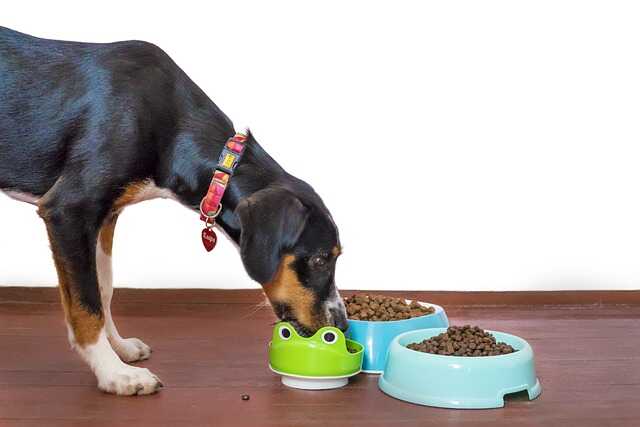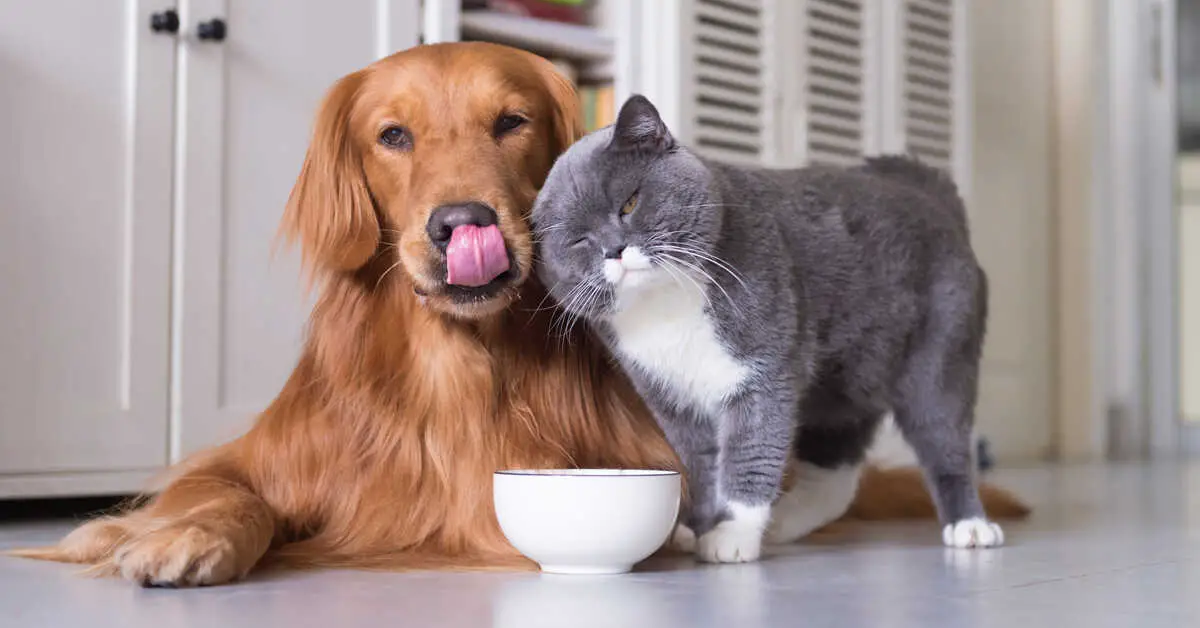Cat and dog food each have their own nutritional needs that are important to consider when shopping for your pet. Cats are obligate carnivores, meaning that their bodies are designed to digest and use animal-based proteins better than plant-based proteins.
For this reason, cat food is typically higher in protein than dog food. Cats also need more fat in their diet than dogs do, so cat food typically contains more fat than dog food. And since cats have a lower tolerance for sugar than dogs, cat food is typically less sweet than dog food.
Can Cats Safely Eat Dog Food for a long time?
Not actually, cats cannot be maintained on a dog food diet. When a cat is only fed dog food for a long period, then harmful, if not deadly, consequences can occur.
Because dog food and cat food formulas have different nutritional components methodically to meet the different nutritional needs of these two species.
Cats and Dogs Have Different Nutritional Requirements
Since both dogs and cats share our hearts and homes, gradually, nature has molded them into very different animals with very different nutritional needs.

Generally, cats are obligate carnivores, which means that they need a diet of meat-based proteins and animal fats by rule for all of their body systems to function accurately.
On the contrary, dogs are actually omnivores. Usually, an omnivore has a more flexible diet and can easily eat both meat and vegetables. Additionally, a dog food diet does not meet the specific nutritional needs that cats require.
What is the difference between Cat and Dog Food: Comparison
We have included just a few key differences in the preparation of dog food and cat food.
Based on Taste
Usually, cats cognize taste differently than dogs. Unlike dogs, the cat lacks the ability to sense sweetness, and even the number of taste receptors are different between the two species.
According to research, cats have a measly 470 taste buds, while dogs have 1700, while humans have over 9000. Cat foods are particularly formulated to be highly palatable in order to entice our occasionally picky feline friends to eat.
Needless to say, it’s generally uncommon for cats to even want to eat dog food. However, dogs love the delicious, high-protein content in cat food.
Based on Protein
As being strict carnivores by nature, cats need much higher protein food content than dog food contains.

On the contrary, occasional brands and types of dog food contains feature higher protein levels, however, as a whole, not even these specialized dog foods reach a high level of protein needed to keep cats healthy.
Moreover, most dog foods have an ‘As-Fed’ protein amount of 18-26%. On the opposite, for cats, we usually recommend aiming for at least an “As-Fed” protein percentage of 30-34%, with an optional supplement of canned cat food with 40-50% protein.
Based on Taurine
Actually, cats are among a few of mammals that don’t have the ability to make taurine, therefore they must get this necessary element from their foods. Because of a lack of taurine in their diet cats can have:
- Weakened hearts
- Loss of vision
- Digestion problems
The good news is, nowadays all commercially available cat food has taurine included, however, it is rarely included in dog foods.
Based on Arachidonic Acid
Basically, arachidonic acid is a fatty acid that cannot be created by cats either, so it must be ingested. Cats suffering from low arachidonic-acid levels have nonspecific signs of illness. They are:
- Abnormal liver or kidney values
- Occasionally, increased skin issues
On the other hand, dogs can create this fatty acid all by themselves, and for this reason, dog food is seldom supplemented with it.
Based on Vitamin A
Vitamin A is another element that cats cannot synthesize on their own and must have supplemented in their food. Since dog foods do often include vitamin A supplements, these foods will never contain high enough amounts for optimal cat nutrition.
Because of the lack of vitamin A cats will have:
- Poor quality coats
- Muscle weakness and deterioration
- Possible night blindness
Related: Best Vitamin For Cats
Based on Niacin
A cat’s diet also contains niacin, as cats cannot make their own.
In fact, animal tissue is the most common source of niacin in cat food. However, plants do have low levels of niacin.
Sweet
cat food is typically less sweet than dog food. This is because cats have a lower tolerance for sugar than dogs do. Cats also generally prefer foods that are higher in protein and fat and lower in carbohydrates.
FAQ’s
Can a cat and a dog eat the same food?
Since it’s dangerous to feed only cat food to dogs, cats cannot survive on dog food alone. Generally, dog food lacks enough vitamin A and taurine, two nutrients cats need to live healthy lives. Besides, dog food is also deficient in arachidonic acid and lacks the adequate meat-protein levels that cats need.
Can dog food hurt a cat?
A seldom bite of dog food won’t hurt your cat. However, dog food is not an alternative to cat food. Remember, cat food is specially formulated for a cat’s needs.
Why does my dog often want to eat cat food?
Actually, dog food needs to contain more fiber than meat can provide by itself. For this reason, your dog may have a deep desire to eat cat food often because they enjoy the taste.
How can I get out my dog to eat cat food?
If you don’t have an isolated room for your cat’s food, then put the cat’s bowl on a high surface. Most cats have no trouble jumping to high places that a dog can’t reach.
Final Thoughts
After trying out both cat and dog food, it is clear that they are both very different. Cat food is much richer and more flavorful, while dog food is more bland.
However, both are still nutritious and provide the necessary nutrients for their respective pet. In the end, it is up to the pet owner to decide which food is best for their animal.
Dr. John Morris, DVM is a Doctor of Veterinary Medicine who has seven years of experience in feline medicine, dermatology, and behavior. He also enjoys volunteering at a local NGO that supports literacy programs for children and adults. In his free time, he enjoys fostering kittens, traveling, vegan cooking, hiking, and biking. Learn more about Justin here.


